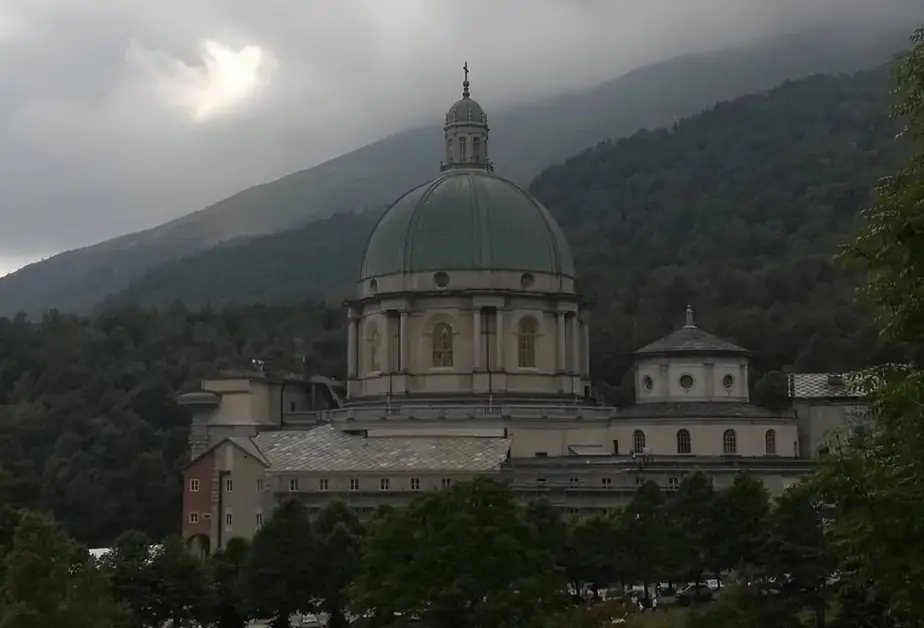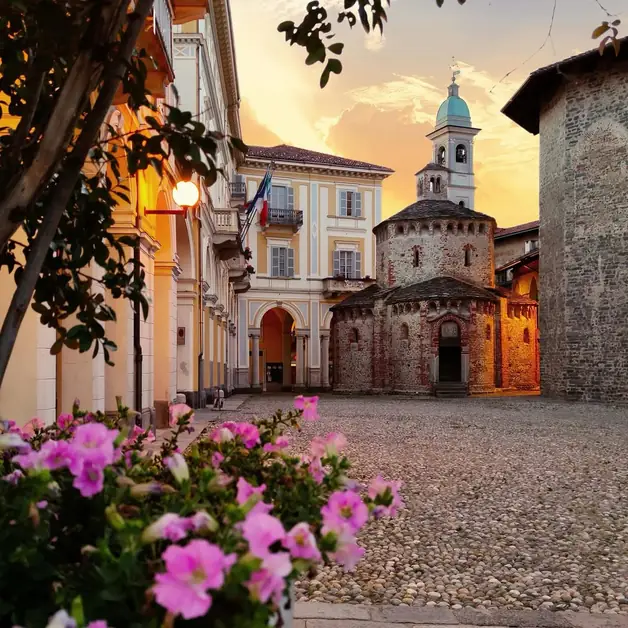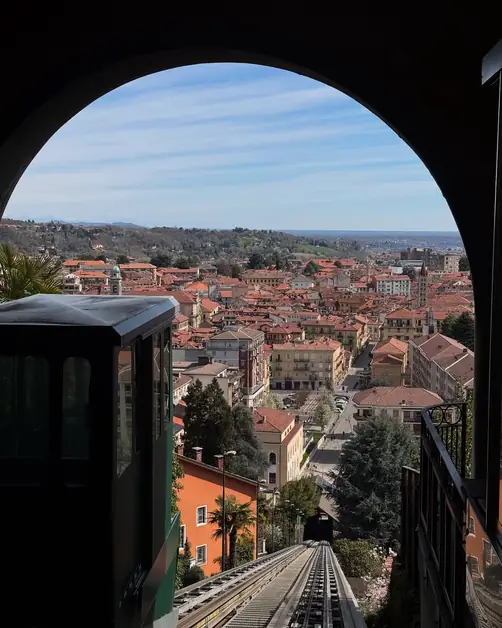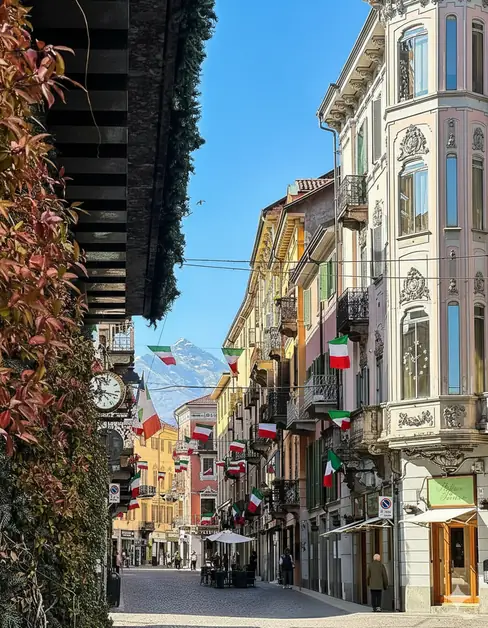The Sanctuary of Oropa a journey between faith and nature
The Sanctuary of Oropa is a place of faith and natural beauty.

Where is the Sanctuary of Oropa and how can it be reached?
The Sanctuary of Oropa is located about 12 kilometers from Biella, at an altitude of 1,200 meters, nestled among the mountains of the Biella Alps. It is one of the most important religious complexes in Italy and Europe, dedicated to the Black Madonna of Oropa, protector of the Biella area. To reach it, you can start from the center of Biella by car or bus, taking the scenic road that crosses woods and small villages. In summer, many tourists and pilgrims choose to walk along the paths that connect the city to the sanctuary, to experience a spiritual and naturalistic experience at the same time.
Why is the Sanctuary of Oropa so famous?
The Sanctuary of Oropa is famous because it represents one of the main Marian places of worship in the Alps. According to tradition, it was founded by Saint Eusebius, bishop of Vercelli, in the 4th century, who brought with him a wooden statue of the Black Virgin from Palestine. Over the centuries, the sanctuary has expanded to become an imposing monumental complex, with squares, basilicas, cloisters, and porticoes built between the 17th and 19th centuries. Today, Oropa is a UNESCO World Heritage Site as part of the Sacred Mountains of Piedmont and Lombardy, a recognition that highlights its historical, artistic, and religious value.
How is the Sanctuary complex structured?
The Oropa complex is organized on several levels. In the lower part, there is the Old Sanctuary, with the Old Basilica that houses the statue of the Black Madonna. Ascending, you reach the Upper Basilica, an imposing neoclassical building completed in 1960, which dominates the entire complex. The basilica is flanked by cloisters, galleries, and squares that offer a stunning view of the surrounding mountains. Inside the sanctuary, there is also the Museum of Oropa Treasures, which preserves sacred objects and historical testimonies, and the Sanctuary Library, with ancient manuscripts and religious documents.
Who is the Black Madonna of Oropa and why is she venerated?
The Black Madonna of Oropa is a wooden statue depicting the Virgin Mary with the Child, dark in color due to the material and ancient patina. It is the object of deep devotion throughout Piedmont and beyond. It is believed to have miraculous powers and to protect the faithful from calamities and diseases. Every hundred years, the Coronation of the Madonna of Oropa is celebrated, a solemn ceremony that attracts thousands of pilgrims. The last coronation took place in 2021, keeping alive a tradition that dates back to 1620.
What to see in the Sanctuary of Oropa?
In addition to the two basilicas, the Sanctuary offers many spiritual, artistic, and natural attractions. Among the most suggestive places is the Sacred Mountain of Oropa, a devotional path immersed in greenery, consisting of 12 baroque chapels that tell the life of the Virgin Mary through statues and frescoes. Do not miss the Monumental Cemetery, one of the most beautiful in the Alps, and the Botanical Garden of Oropa, which hosts rare alpine species and a small naturalistic path. For art lovers, it is worth visiting the Museum of Treasures, where sacred vestments, ex-voto, and cult objects collected over the centuries are displayed.
What panoramas can be admired from Oropa?
From the Sanctuary, you can enjoy spectacular views of the Biella mountains and the Piedmont plain. From the terraces and porticoes, you can admire the beech and chestnut woods that surround the complex. For those who wish to venture higher, a path leads to Mount Mucrone (2,335 meters), which can also be reached by cable car. From there, the view opens up to Monte Rosa and, on clear days, to the distant Swiss peaks.
What to do at the Sanctuary of Oropa?
In addition to prayer and spiritual visits, Oropa offers many opportunities for leisure and discovery. Visitors can participate in masses and processions, but also explore the paths that start from the sanctuary for trekking and nature walks. In summer, excursions can be organized to the Mucrone Lakes or the Rosazza Refuge, while in winter, the area becomes a starting point for snowshoeing and activities on the snow. Throughout the year, the sanctuary also hosts concerts, exhibitions, and cultural events that combine spirituality and art.
Where to eat and sleep in Oropa?
Inside the complex, there are restaurants and inns where you can taste typical dishes from the Biella area, such as polenta concia, panissa, and alpine cheeses. For those who wish to stay, the sanctuary offers accommodation facilities within its historic buildings, with simple but welcoming rooms, ideal for those seeking peace and quiet. In the surroundings, there are also hotels, agritourisms, and B&Bs immersed in greenery, perfect for those who want to explore the Oropa Natural Park and the surrounding mountains.
What to do in the evening at the Sanctuary of Oropa?
In the evening, Oropa takes on a magical and contemplative atmosphere. Soft lights illuminate the porticoes and basilicas, while the silence of the mountain creates a sense of deep peace. Many visitors choose to attend the evening mass, while others simply stroll in the central courtyard or stop to gaze at the starry sky, far from the noise of the city. During the summer, choral concerts and cultural evenings are organized that enrich the spiritual experience with the beauty of music.
Why visit the Sanctuary of Oropa at least once in a lifetime?
The Sanctuary of Oropa is not just a place of faith, but an experience that unites spirituality, art, and nature. Here, one breathes a sense of harmony that involves body and spirit. Visiting Oropa means rediscovering slowness, silence, and the wonder of the Piedmontese mountains, in a unique context in the world. Whether arriving as a pilgrim, tourist, or simple curious person, Oropa welcomes everyone with the same serenity, offering a refuge of peace and beauty in the heart of the Biella Alps.


